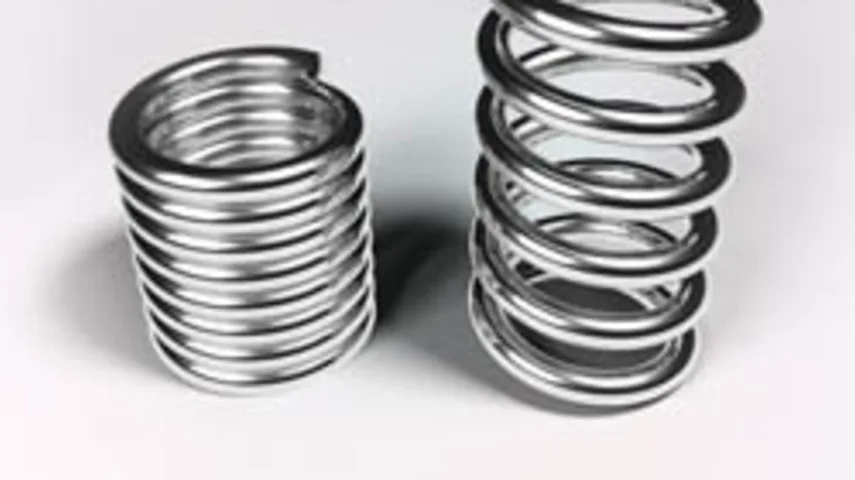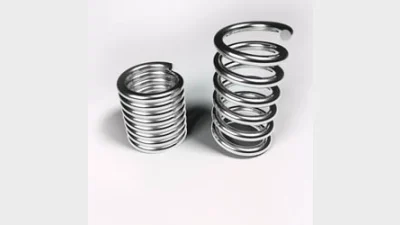Are fund managers bouncing back?



After a disastrous 2008, fund managers staged a dramatic recovery last year. Chris Kennedy takes a look at fund manager performance in 2009 and the factors that prompted a return to form.
As the financial Armageddon predicted by many doomsayers failed to eventuate, Australian fund managers were able to stage a dramatic recovery in 2009 in the wake of what was nothing short of a disastrous year in 2008.
Australia managed to avoid sinking to the economic depths seen in many North Atlantic markets in 2009, while the domestic market saw almost a direct reversal of 2008 as far as fund managers were concerned.
In 2008 a safety first approach allowed many managers to avoid plumbing the depths seen by some growth funds, but in 2009 it was an investment in the recovery of cyclical stocks that allowed the best performing managers to far exceed the results of the risk averse, who lagged the market.
Lonsec’s 2009 Large Cap Australian Equity Sector Review points to a significant turnaround in 2009, with many managers even able to outperform the dramatic improvements seen in the index.
“Following the broad based declines in 2008, the Australian share market (as measured by the S&P/ASX 300 Accumulation Index) recovered to post a return of 37.6 per cent for the calendar year,” Lonsec reports.
“As the share market recovered strongly, so did the performance of funds in this sector. The Lonsec peer group average return of 39.4 per cent (after fees) was 1.8 per cent above the benchmark,” the report states.
The Lonsec review points to several factors that drove the market recovery in 2009. Following interviews held with portfolio managers, the overall strength of the Australian market was cited by Lonsec as “the key factor underpinning the share market recovery from a ‘top down’ perspective”.
Australia’s strong fundamentals relative to other developed countries included the strength of the domestic banking sector and financial system, the Federal Government’s fiscal stimulus initiatives, the Reserve Bank’s monetary policy easing and Australia’s ties to Asia as a major export partner being favourable to commodity prices and the resources sector, according to the report.
From a ‘bottom up’ perspective, the ability of corporates to raise additional capital during the downturn and meet earnings expectations from lower levels through cost cutting initiatives were factors contributing to an improvement in investor confidence and recovery in the share market, Lonsec says.
Morningstar analyst Chris Douglas says managers who have a quality bias in their portfolio with low to no levels of debt and conservative balance sheets lagged the market in 2009.
“Very broadly speaking, the worst performing funds in 2008 were the best performing funds in 2009. Risk reduction was definitely not the place to be in 2009,” he says.
“It goes back to 2009 being a complete reversal of 2008. To a degree it came down to how managers were positioned at the beginning of 2009 and the end of 2008 because we had such a big sell off [in] markets.”
He points to an Equity Trustees fund as an example. “The EQT SGH Wholesale Small Companies Fund in 2008 was down 65.5 per cent; in 2009 it was up 124 per cent. That’s a broad pattern across the board,” he says.
Some managers started to see value in the cyclical part of the market in early 2009, whereas the quality or conservative companies that had done well in 2008 were becoming quite expensive on a relative basis, he says.
“A number of managers moved out of strong, stable companies into those that would do better out of a cyclical recovery if the market started moving up again. We saw a number of managers do that very, very well, [but] we saw other managers become overly defensive in 2008 and then in 2009 they were just too defensive and they lagged the market.”
Leanne Milton, head of research — fund services at Standard & Poor’s, says the best performers in 2009 were value managers and those exposed to more cyclical, higher beta stocks that offered the greatest leverage to the strong share market recovery.
“Overweight exposures to more economically sensitive sectors such as financials, particularly the major banks, resources and early stage cyclicals such as media and retail, were strong contributors to excess returns. A bias towards small cap stocks also assisted performance significantly,” she says.
“Top down decision making and a preparedness to move portfolios were important drivers to relative performance; although the general revaluation of the market, as well as the raft of discounted capital raisings, created opportunities for both growth and value managers,” she adds.
There was a strong divergence between the best and worst performing funds throughout 2009. Lonsec’s Large Cap Australian Equity Sector Review found that the best performing fund for the year was the UBS Australian Share Fund with an absolute return of 50.6 per cent, while the worst performing fund was the IML Australian Share Fund at 28.2 per cent — a difference of 22.4 per cent.
Boutiques
Boutiques performed surprisingly strongly throughout the global financial crisis considering the pressure on capital, and some that have recovered quickly were among the best performing funds of 2009.
“What we found in general was boutiques were under a lot of capital stress in 2008, when a lot of clients’ money was thrown out the door, and by and large we’ve found that they’ve actually come through this pretty well,” Douglas says.
Milton says boutiques did better in niche areas.
“Some of the managers such as the Magellan Global Fund in the global equity concentrated hedged space, Hunter Hall’s, SRI Ethical both globally and locally in the Australian equities space, and Pengana in global small caps did well,” she says.
According to Milton, while the best performers were value managers, there were also some strong stock pickers in the growth and core styles that also performed well in 2009 because of these factors, such as Greencape Wholesale Broadcap Fund, Integrity Australian Share Fund and the Australian Unity Platypus Australian Equities Trust.
Small cap vs large cap
Small cap investing had a return to strength in 2009. According to Douglas, “Smaller cap companies were typically more leveraged to a cyclical recovery and we saw small caps significantly outperform large caps.
"And even micro caps [performed better], the trend of 2009 [seemed to be] the further you go down the market cap the better your performance numbers have been.”
Milton says many of the small cap managers significantly outperformed the index in 2009. “Last year small caps were a very strong performer in Australian equities, returning 57.4 per cent; global equities base returned 13.1 per cent,” she says.
The cyclical sectors leading the recovery and driving the above average performance of the more successful fund managers include IT, materials and consumer discretionary, according to Lonsec, while the worst performing sector is telecommunications, followed by other traditional defensive sectors such as utilities and healthcare.
Last year wasn’t a time to be overly concerned with the investment style of funds, according to Douglas.
“You don’t want to get too caught up in business style. A lot of managers, especially in the more concentrated Australian market, don’t have a strong style bias,” he says, adding growth managers with a bias towards resources or retailers or even a slight small cap bias did very well in 2009.
Looking ahead
John Murray is managing director of Perennial Value, one of the best performing fund managers in 2009 according to researchers. Perennial Value’s Australian Shares Trust returned 57.9 per cent in the 12 months to February 28. Murray believes there are more opportunities ahead.
“As economists, historically we tend to underestimate the contraction when the economy turns down and at the bottom of the cycle we tend to underestimate the extent of the market expansion as the economy turns up,” he says.
The market is currently in a state of flux as the macro concerns that people have are being accentuated by the problems in Greece and the Euro zone, which has led to investors again looking very short term.
“A bit of hot air has gone out of the market in the last two to three months and that’s opened up opportunities for us on a two to three-year view.”
Because capital gains are lower now than over the last 12 months, the dividend component is going to become more important, Murray says.
Many companies introduced significant cost reductions to survive the global financial crisis, but even as the economy recovers many of these cost saving measures will remain in place, meaning revenues may grow more quickly than expenses, leading to an accelerated increase in profit. This will then increase the earnings leverage in the cyclical industrials group of stocks, he says.
Martin Conlon is head of Australian equities at Schroders, whose Schroder Australian Equity Fund returned 54.87 per cent in the 12 months to February 28. Conlon believes that the early stage cyclicals have probably run their course and their appeal has faded.
“We’ve seen a massive recovery in markets to a level where we and most people wouldn’t see markets as particularly cheap anymore. If anything, we’d probably say that cyclicals are a little bit overpriced versus their defensive peers,” he says.
With a global recovery now looking more likely, some of that expected recovery and improved earnings are already being priced into stocks such as materials and deep cyclicals.
“Similarly, on the financial leverage side, we’d probably say that the benefit of buying stocks with financial leverage has largely passed. You get paid for financial leverage most when stocks are cheap,” Conlon says.
There is a question mark over whether cyclical stocks can live up to the earnings expectations now being placed on them.
“Even if earnings recover fairly sharply, so we get a fairly sharp recovery in US demand for example, the question is whether they can sustain those levels of demand because most of that is buoyed by artificial stimulus that at some stage needs to be withdrawn.
"As a rule, it’s quite difficult to work out what the sustainable earnings are for any company at the moment because we’ve been through such a volatile year or two.
"At the moment we’re sitting and waiting. I think there will be some sort of recovery, but we’d still question whether some of those levels of demand will be sustainable in the face of stimulus that does need to disappear.”
The only way we can possibly see similar earnings this year to the 25 per cent to 30 per cent seen in 2009 is if the markets move from relatively fair value to well overvalued, which is unlikely, according to Conlon.
This leads to the expectation of more subdued returns this year, with earnings returning to more ‘normal’ levels.
“After the strong rally in 2009, I think the prevailing view is that it’s now all about earnings delivery. We believe that it favours an environment more conducive to stock picking within the sectors,” Milton concludes.
Many managers are looking for opportunities within the more defensive sectors again while others are looking for second phase cyclicals such as manufacturing, energy, materials and industrials with the view that we are only entering the second stage expansion phase, she adds.
“The market has come up about 55 per cent since its low point, so a lot of good news has already been factored into the market.
“We can expect a more normalised market [in] 2010 and fund managers will be taking a more balanced approach when putting their portfolios together.
"This year is going to be a more balanced year, it’s going to be the stock pickers that do well, while the underlying areas and valuations and underlying companies are going to be a real factor,” Milton says.
“Cyclicals have run really hard. It’s now second stage cyclicals and industrials like financials that will be more of a focus for fund managers.”
Recommended for you
Oksana Patron examines how research houses feel about the ratings ascribed to them by financial planners and how they addressed the potential conflict of interest areas.
After years of indecisiveness, fund managers have voted for the stability of research teams while identifying potential conflicts of interest, Oksana Patron writes.
For the first time in more than four years financial planners have chosen Morningstar as their preferred research house, effectively ending the long-lasting reign of Lonsec, Oksana Patron writes.
Oksana Patron examines the relationship between fund managers and research houses and whether it has been affected by the recent COVID-19 pandemic.









